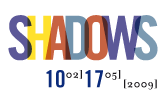
Romanticism
In the Age of Enlightenment, a new approach to the shadow was taken by Johann Caspar Lavater through the Physiognomic Fragments (1775–78) with which he set out to lay the foundations for a study of the human personality based on the projection of facial profi les on a screen. However, the 18th century also gave rise to the aesthetic concept of the ‘sublime’ and the shadow became highly regarded as a tool to convey negative narrative connotations, ultimately leading to an aesthetics of the sinister. In this respect there are outstanding examples in the work of Goya, Heinrich Wilhelm Tischbein, Joseph Wright of Derby, Adolph von Menzel, Jean-François Millet, William Holman Hunt, Jean-Paul Laurens, Gioacchino Toma and Émile Friant.
In the Age of Enlightenment, a new approach to the shadow was taken by Johann Caspar Lavater through the Physiognomic Fragments (1775–78) with which he set out to lay the foundations for a study of the human personality based on the projection of facial profi les on a screen. However, the 18th century also gave rise to the aesthetic concept of the ‘sublime’ and the shadow became highly regarded as a tool to convey negative narrative connotations, ultimately leading to an aesthetics of the sinister. In this respect there are outstanding examples in the work of Goya, Heinrich Wilhelm Tischbein, Joseph Wright of Derby, Adolph von Menzel, Jean-François Millet, William Holman Hunt, Jean-Paul Laurens, Gioacchino Toma and Émile Friant.

Francisco de Goya (1746-1828)
Yard with Madmen, 1794
Oil on tin-plated iron, 42.9 x 31.4 cm (irregular)
Meadows Museum, Southern Methodist University, Dallas, Texas.
Algur H. Meadows Collection

Heinrich Wilhelm Tischbein (1751-1829)
The Big Shadow, c. 1805
Watercolor, 36.7 x 23.4 cm
Landesmuseum für Kunst und Kulturgeschichte, Oldenburg

William Holman Hunt (1827-1910)
The Shadow of Death, 1870-1873
Oil on canvas, 214.2 x 168.2 cm
© Manchester City Galleries

Émile Friant (1863-1932)
Cast Shadows, 1891
Oil on canvas, 117 x 67 cm
Musée d’Orsay, Paris
© RMN / Hervé Lewandowski
















